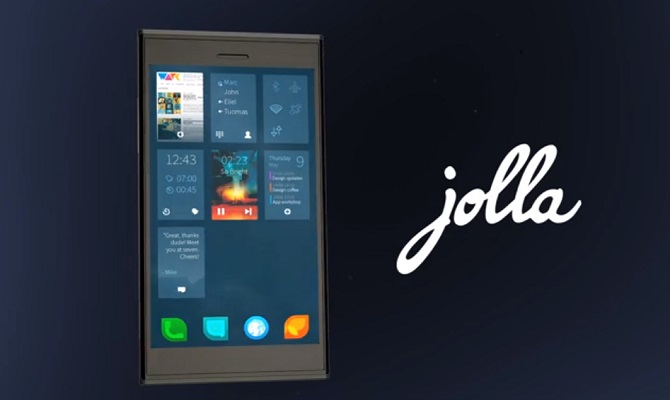What is Sailfish OS? 5 Things to Know About Jolla’s Open Source OS
This year, we're already expecting to see a slew of new smartphone operating systems from the likes of Samsung, Ubuntu and Mozilla, so what's one more?. Finnish startup Jolla has announced that its Sailfish-based device will debut this year, joining the likes of Firefox OS, Ubuntu and Tizen that could rival Android in the open-platform smartphone space.
Jolla, which was founded by former Nokia employees, essentially builds on the premise of the MeeGo OS which has since evolved into Tizen. Jolla’s self-titled LTE-enabled smartphone will be the first device to use Sailfish as its operating system, and comes with a 4.5-inch display, a dual-core processor, 16GB of storage expandable via microSD, an 8-megapixel camera and a replaceable battery.
The phone will cost 399 ($512) and is set to ship during the fourth quarter of this year. But what exactly is a Sailfish phone? Here are five quick facts about Sailfish and what it’s like to use Jolla’s mobile OS.
1. Android-Compatible
In an effort to boost app availability on its platform, Jolla has made Sailfish compatible with Android applications. This means that those who purchase Jolla’s phone will be able to download and install apps from Google’s Play store, which boasts a selection of more than 800,000 applications. According to Jolla you’ll have to install these apps through a “third party solution,” which probably means you’ll have to sideload them. This should make it easy for Android developers to port their apps to Sailfish, although we’re still waiting to hear about Sailfish’s own app store.
MORE: 5 Ways to Speed Up Your Android Phone in Under 5 Minutes
2. Open-Source Based on Linux
Sign up to receive The Snapshot, a free special dispatch from Laptop Mag, in your inbox.
Sailfish is an open source mobile operating system based on the Linux kernel, which means it supports both ARM and x86 devices. It builds on the Mer core that provided the foundation for MeeGo back in 2010, and uses a custom-built user interface. So what does this actually mean for smartphone users?
With Sailfish, just like with Android, Firefox OS and Ubuntu, users can get the source code that Sailfish is based on. This means you can actually make alterations and tinker with the software unlike eoyj Apple's closed-source iOS mobile operating system.
3. Gesture-Based Interface
Similar to BlackBerry 10, Sailfish uses directional swipes to navigate the OS rather than physical buttons. For example, from the home screen you can swipe up to access the app launcher and swipe down to return home. You’ll also use pulling and swiping motions to make selections and launch menus within apps as well.
The “People” app, for instance, requires that you place your finger on the menu that you’d like to launch and then pull down to see your options. Let’s say you’d like to edit information associated with one of your contacts within the People app. Pressing a category such as “Company” and dragging down will reveal “Edit” and “Delete” options at the top of the screen. You can also press and drag from left to right to exit an app.
MORE: Is BlackBerry's Comeback for Real?
4. Shortcuts
Sailfish is all about using tapping, pressing, swiping and dragging gestures to launch commands and Jolla has thrown some shortcuts into its OS as well. From within any app, you can press your finger down on the right side of the screen and push toward the center to reveal your notifications and network and battery indicators. As soon as you lift your finger from the screen, you’ll be back where you were in the app.
5. Tablet-Ready
Although Jolla plans to focus on the smartphone market, its Sailfish OS is also compatible with tablets. Back in November the company responded to a Twitter user who asked whether or not we’ll ever see a Sailfish slate. “We shall see, Sailfish OS works in a tablet too,” Jolla tweeted.
Sailfish will be entering a crowded smartphone market when Jolla launches later this year, but we’ll be looking forward to seeing how it fares against the competition. Firefox OS and Ubuntu are both newcomers on the mobile OS scene, but competing with a household name like Android could be tough. According to PCWorld, the IDC says that Firefox OS and Tizen are expected to take less than five percent of the smartphone market share in five years, and the research firm hasn’t even begun tracking Ubuntu and Sailfish.


